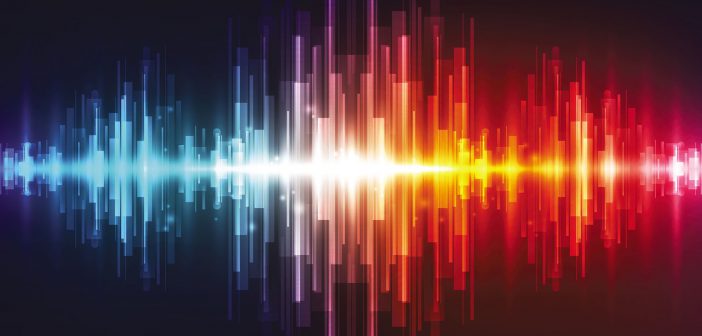The rising importance of achieving effective acoustics in hotels
by Niklas Moeller
In a recently released report titled “Hospitality Design and Well-Being: Quality Sleep at Hotels,” the American Society of Interior Designers describes how design can help hotels promote deep, restful sleep. Although noise does not top the list of sleep-disrupting factors documented in this report, various noise sources are cited individually that, when added together, account for 46 percent of total disturbances.
Sleep deprivation – due to delayed onset, interruptions to sleep state, and awakenings – can have a number of psychological and physiological impacts on guests. These run the gamut from not feeling well-rested enough to tackle the day’s activities to more serious, cumulative effects that, according to John Hopkins researcher Patrick Finan, Ph.D., include increased risk for heart disease, cancer, dementia, and obesity.
SOUNDING OFF UNHAPPY GUESTS
Noise issues can also have a considerable impact on the property. Dissatisfied guests are less likely to return and more inclined to post a negative review. As a result, a hotel’s reputation and bookings can suffer. For example, a TripAdvisor survey found that 55 percent of guests look at online reviews specifically addressing sleep quality before making a reservation. There are also direct costs associated with appeasing unhappy visitors, such as by offering discounts.
When trying to tackle this problem, property owners and managers tend to focus exclusively on reducing overall volume levels within guest rooms, primarily by increasing the specifications for walls, doors, and windows, and purchasing quieter equipment. However, when it comes to sleep, studies show that dynamic range – or the variation in volume – is often the primary culprit.
THE SCIENCE OF SLEEP
Sleep studies conducted in health care, military, and residential facilities show that variations in our acoustic environment are difficult to ignore – even while we are asleep – because our senses are designed to detect changes in our surroundings. And as the difference between a room’s background sound level and any intermittent noises increases, so does the likelihood that our sleep will be disrupted. This research also indicates that we sleep better in rooms in which we are exposed to continuous sound of a certain volume than those in which we experience intermittent noises, even if they are of the same average level. For example, infrequent bursts of periodic traffic are far more disruptive to sleep than the constant sound made by a steady stream of traffic.
By way of example, I was recently asked to make sound-level measurements in a residential bedroom because the occupant had complained to town officials about traffic noise from an adjacent road. Though the occupant was confident that volumes exceeded local regulations, tests revealed that when traffic passed by, peak volumes only reached 40 to 41 A-weighted decibels (dBA). The occupant perceived them as higher due to the significant 14- to 15-dBA change in volume from the bedroom’s low background sound level of 26 dBA.
Hotel owners and managers might be surprised to learn that the noise peaks that disrupt guests’ sleep and comfort are often not much greater than 40 dBA. To put it in context, normal conversation is in the range of 50 to 60 dBA. While one would not usually describe 40-dBA noises as “loud,” they are very disruptive within the pin-drop environment of guest rooms, which typically exhibit background sound levels of only 28 to 32 dBA.
BACKGROUND NOISE
Guests can be made more comfortable by using a sound-masking device to increase the room’s background sound level. Though adding sound might seem contrary to the goal of achieving effective acoustics, the premise is simple: any noise lower than the new background sound level is masked, while the impact of those above it is lessened because the degree of change between the baseline and any volume peaks is smaller.
Because most noises entering guest rooms are near or below 40 dBA, they are easily muted by a relatively low level of masking (40 to 45 dBA). Though this level will not always completely cover an offending noise, it will reduce both the frequency and magnitude of volume changes, creating a less variable – and, therefore, more comfortable – sleeping environment for guests.
Sound masking can also be used to treat acoustic issues in other areas of the property. For example, there is a growing trend whereby brands are promoting their hotels as co-working spaces (to which some have applied the tongue-twisting term “corporatality”) – an approach that can work better for those engaged in business “on the go” than the traditional monthly membership structure used by co-working companies.
However, success depends on more than providing a convenient place to work. Properties should endeavor to create an environment that supports occupants’ needs. While some have simply added more electrical outlets and USB ports to make existing common areas more appealing to mobile workers, others offer spaces specifically designed to augment their ability to host business activities. Sound masking can be installed in dedicated co-working spaces in order to improve speech privacy and concentration – the role this technology has played in commercial offices and call centers for several decades.
 Niklas Moeller is the vice president of K.R. Moeller Associates, manufacturer of the LogiSon Acoustic Network and MODIO Guestroom Acoustic Control (www.modio.audio). He has more than 25 years of experience in the sound-masking field.
Niklas Moeller is the vice president of K.R. Moeller Associates, manufacturer of the LogiSon Acoustic Network and MODIO Guestroom Acoustic Control (www.modio.audio). He has more than 25 years of experience in the sound-masking field.




